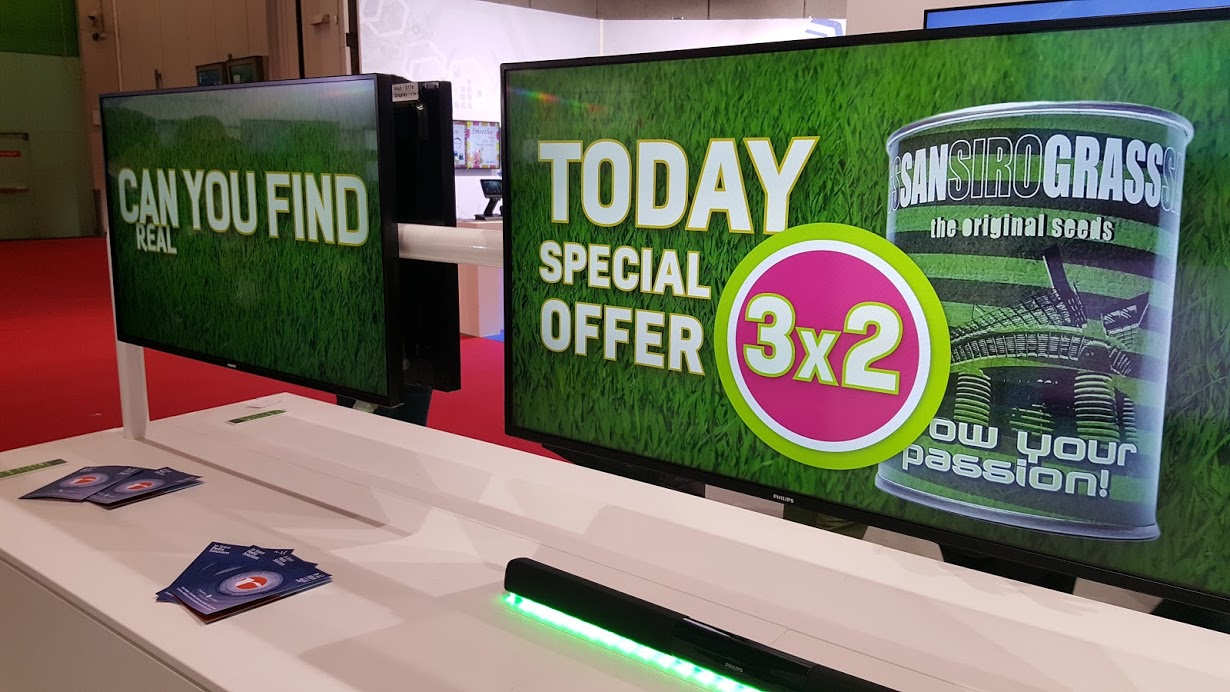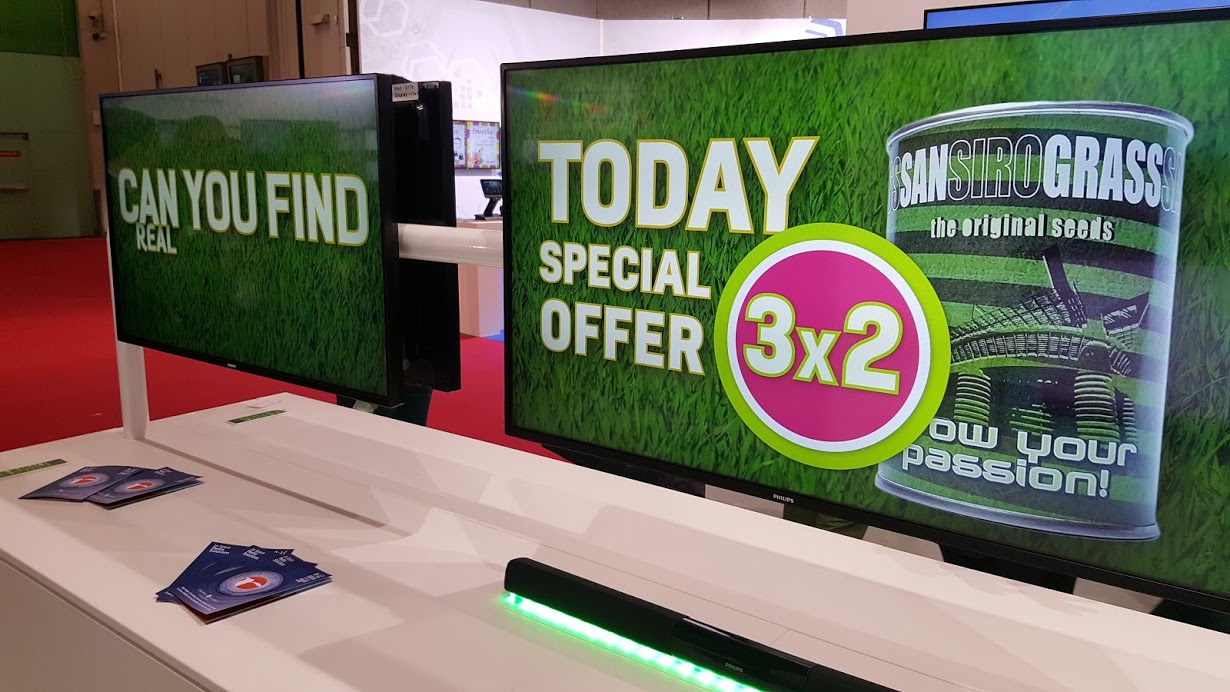
Closer Look At Philips’ New Android SoC Display Series
February 18, 2016 by Dave Haynes

Last week at ISE I spent about 30 minutes getting a detailed demo from an Italian company, Tailoradio, that had developed a signage platform called VideoMood to operate on Philips’ new D-Line series of displays, which have embedded players running Android.
I was impressed with what Luca Santini, Tailoradio’s CTO, walked me through with the newly minted system. It included sync’d screen controls, sync’ing with in-store radio and with lighting systems. But he could only give me a basic run-through of what was going on with the Philip’s panels and System onChip processors.
Instead, overnight he helped me track down the product manager for the series, which debuted at ISE but will make its North American debut at DSE in less than a month. Harold Niericker of TPV, the Hong Kong-based manufacturer that makes Philips panels under a licensing and marketing agreement, was also very helpful in walking me through the newest competitor in the all-in-one panel/player category.
The SoC is a Quad Core A9, and it runs Android 4.4.4, with plans to bump to 5.1 within a few months. If this means little to you, most software guys in signage who use Android would be happy the gadget is at 4.4, as that version is stable and handles video well.
Philips is not surprisingly happy to talk to software companies interested in porting their native Android software players to its panels. Post NDA, software firms get documentation, contact with the development team and access to APIs.
“Implementation is quite simple as we have stripped most layers,” says Niericker. “We also include a control server API for 3rd parties to implement in their CMS environment. Obviously, many customers would like to just communicate with the display without using our API and for that we offer a version of our SICP protocol to have direct communication.”
The attraction, at least in some circles, to an Android solution versus the proprietary SoC set-ups of Samsung and LG is time and resources. While it’s possible to get the basics going on an SoC panel quickly, weeks or months of work could be required to fully be working on them. If a software company has already invested the time to develop a native Android player, getting running on the Philips system would be akin to getting running on a different Android box or stick. There will be tweaking and testing, but not a lot more.
So far, Tailoradio and Sweden’s instoremedia have got their Android players up on the Philips displays.
The company, like seemingly all the panel guys, has a CMS for simple signage jobs. It’s free and meant for the SMB crowd.
The panels come with a few clever features, including remote display management, a PCI slot that would allow a 4G wireless module to be attached, and a failover feature that plays back-up content on the screen in the event of a media player failure.
The panels range in size from 32-inch to 65-inch.
Here’s a minimally helpful but friendly vid from Philips, via rAVe:
By my tally, we now have most manufacturers doing something with SoC or all in one panels:
- Samsung – SmartSignage proprietary platform
- LG – WebOS proprietary platform
- NEC – Android player that snaps in OPS port (not really SoC, but all in one-ish)
- Panasonic – Android SoC also announced last week, but details very hard to find — nudge-nudge Panasonic.
- Philips – Android SoC
- Sharp – Not sure
- BenQ – Not sure but don’t think so



Leave a comment